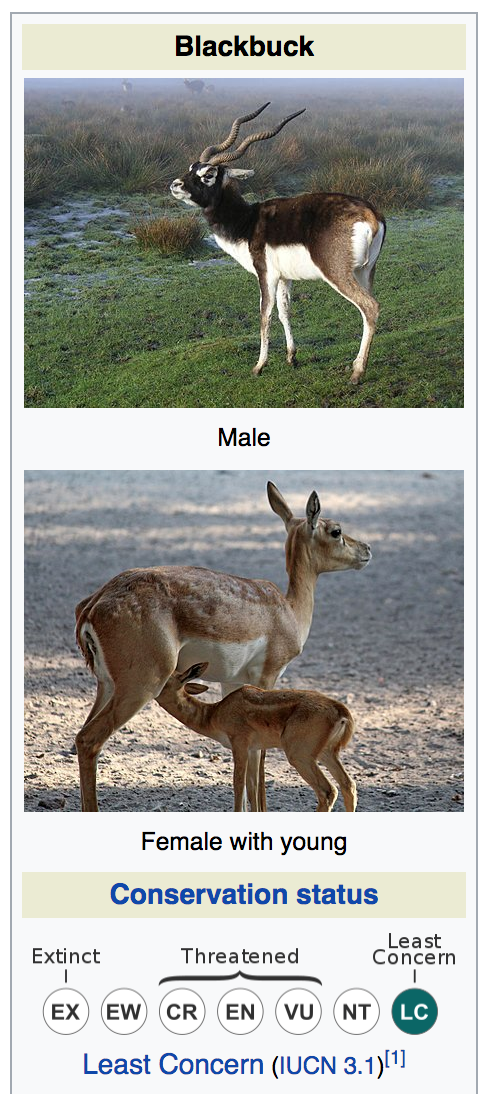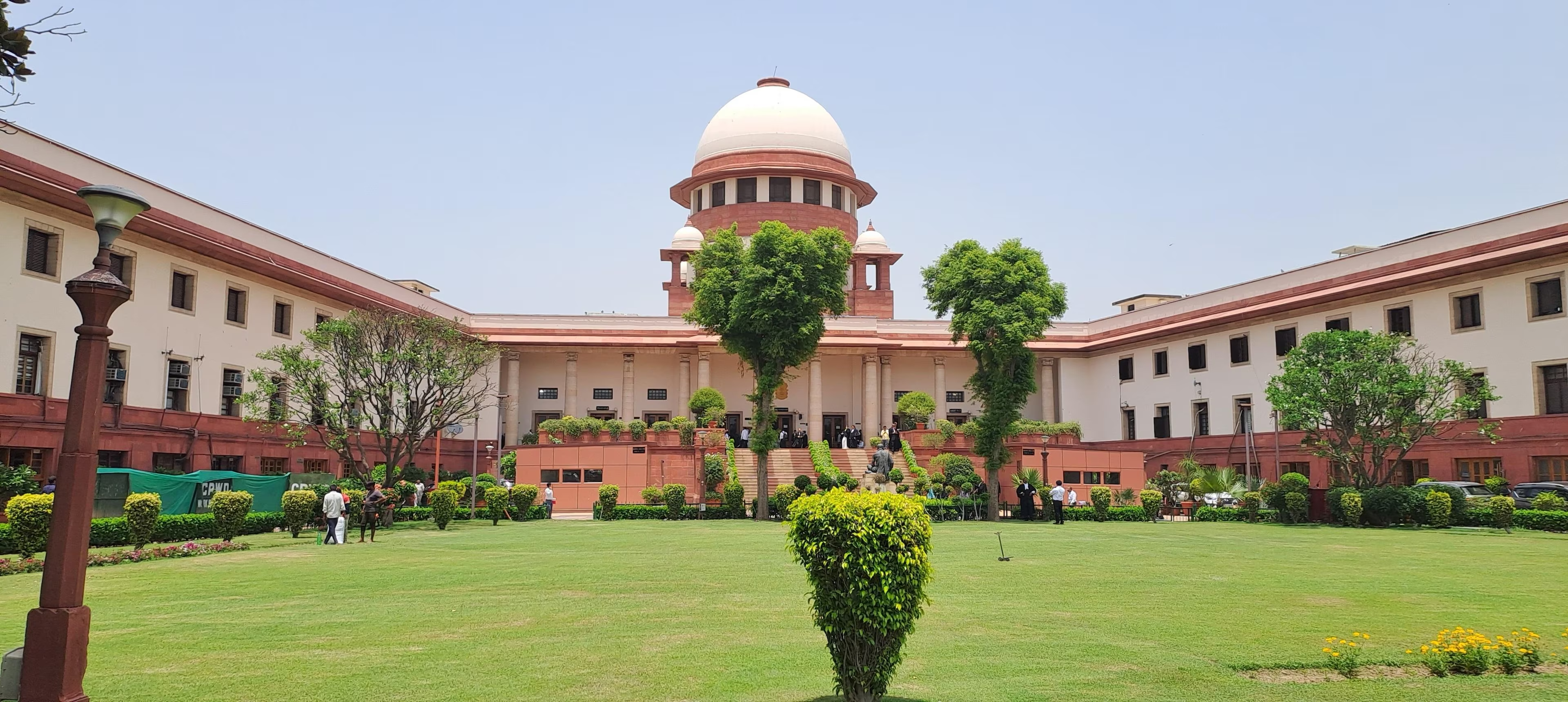- Courses
- GS Full Course 1 Year
- GS Full Course 2 Year
- GS Full Course 3 Year
- GS Full Course Till Selection
- CSAT
- 5 LAYERED ARJUNA Mentorship
- Public Administration Optional
- Online Program
- GS Recorded Course
- NCERT (Recorded 500+ Hours)
- Polity Recorded Course
- Geography Recorded Course
- Economy Recorded Course
- AMAC Recorded Course
- Modern India, Post Independence & World History
- Environment Recoded Course
- Governance Recoded Course
- Science & Tech. Recoded Course
- International Relations and Internal Security Recorded Course
- Disaster Management Module Course
- Ethics Recoded Course
- Essay Recoded Course
- Current Affairs Recoded Course
- ABOUT US
- OUR TOPPERS
- TEST SERIES
- FREE STUDY MATERIAL
- VIDEOS
- CONTACT US
Increase in Blackbuck Population
Increase in Blackbuck Population

Increase in Blackbuck Population
Why in News?
As per the new study by the Indian Institute of Science (IISc), blackbucks in India have adapted well to natural and human-induced challenges to their survival.
So, What are the Findings of the Study?
The study found that, inspite of immense losses in grassland habitats across India, the data showed an increasing trend in blackbuck population numbers as compared to the recent past.
About the Blackbucks
1. The Blackbuck (Antilope cervicapra), or the Indian Antelope, is a species of antelope native to India and Nepal.
2. It is widespread in Rajasthan, Gujarat, Madhya Pradesh, Tamil Nadu, Odisha, and other areas throughout peninsular India.
3. It is considered as the species of grassland.
4. The blackbuck is a diurnal antelope (active mainly during the day).
5. It has been declared as the State Animal of Punjab, Haryana, and Andhra Pradesh.
6. Blackbucks are considered as the symbol of purity in Hinduism as its skin and horns are regarded as sacred objects. In Buddhism, it is considered a symbol of good luck.
7. Threats: Habitat Fragmentation, Deforestation, Natural Calamities, Illegal Hunting.
Protection Status:
1. Wildlife Protection Act 1972: Schedule I
2. IUCN Status: Least Concern
3. CITES: Appendix III
Protected Areas Related to Black Buck are:
1. Tal Chhapar Sanctuary: Rajasthan
2. Velavadar Blackbuck Sanctuary – Gujarat
3. Point Calimere Wildlife Sanctuary - Tamil Nadu
4. In 2017, the Uttar Pradesh State Government approved the plan of setting up the Blackbuck Conservation Reserve in the trans-Yamuna belt near Prayagraj. It will be the 1st conservation reserve dedicated to the blackbuck.
What is the Wild Life (Protection) Act, 1972?
- Prior to this law, India was having only 5 designated national parks but at present, there are more than 100 National Parks in India.
- The Wild Life (Protection) Act, 1972 provides a legal framework for the protection of various species of wild animals and plants, management of their habitats, regulation and control of trade in wild animals, plants and products made from them.
- The act has categorised the plants and animals into various schedules and they are given various degrees of protection and monitoring.
- It prohibits the hunting of any wild animal included in Schedules I, II, III and IV of the Act.
- A wild animal listed under these schedules can be hunted/ killed only after getting permission from the Chief Wildlife Warden (CWLW) of the state if:
a) It becomes dangerous to human life or to property (including standing crops on any land).- It is disabled or suffering from a disease that is beyond recovery.
- As per the act, the central government of India shall constitute the National Board for Wildlife (NBWL).
- NBWL serves as an apex body for the review of all wildlife-related matters and for the approval of projects in and around national parks and sanctuaries.
- The NBWL is chaired by the Prime Minister and is responsible for the promotion of conservation and development of wildlife and forests.
- The Minister of Environment, Forest and Climate Change is the Vice-Chairperson of the board.
- The board is ‘advisory’ in nature and can only advise the Government on policy making for conservation of wildlife.
- Recently, the government has proposed some amendments in the Wildlife (Protection) Act, 1972.
About the Proposed Amendments
- This amendment proposed a new schedule for species listed in the Appendices under CITES.
- Section 6 of the Act has been amended to constitute ‘Standing Committee’ to exercise such powers and duties as may be delegated to it by the State Board for Wildlife.
- Section 43 of the Act is also amended and now it permitted the use of elephants for 'religious or any other purposes'.
- Section 49E has been inserted which enable the Central government to appoint a Management Authority.
- The Bill also empowers Central government to regulate and stop the import, trade or possession of invasive plant or animal alien species.
- The Bill also increased the penalties prescribed for violation of provisions of the Act.
- For 'General violations', maximum fine is increased from 25,000 to 1 lakh.
- In case of Specially protected animals, the minimum fine of Rs. 10,000 has been enhanced to Rs. 25,000.
Must Check: Best IAS Coaching in Delhi



